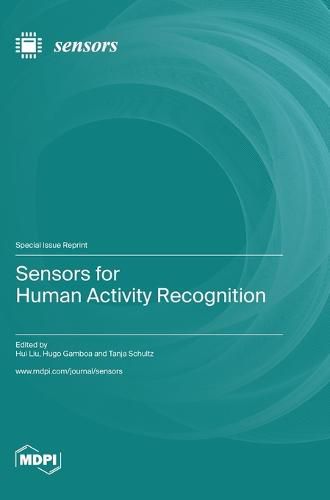Readings Newsletter
Become a Readings Member to make your shopping experience even easier.
Sign in or sign up for free!
You’re not far away from qualifying for FREE standard shipping within Australia
You’ve qualified for FREE standard shipping within Australia
The cart is loading…






This title is printed to order. This book may have been self-published. If so, we cannot guarantee the quality of the content. In the main most books will have gone through the editing process however some may not. We therefore suggest that you be aware of this before ordering this book. If in doubt check either the author or publisher’s details as we are unable to accept any returns unless they are faulty. Please contact us if you have any questions.
Human activity recognition (HAR) and human behavior recognition (HBR) play increasingly important roles in the digital age. High-quality sensory observations applicable to recognizing users' activities and behaviors, including electrical, magnetic, mechanical (kinetic), optical, acoustic, thermal, and chemical biosignals, are inseparable from sensors' sophisticated design and appropriate application.
Traditional sensors suitable for HAR and HBR, including external sensors for smart homes, optical sensors such as cameras for capturing video signals, and bioelectrical, biomagnetic, and biomechanical sensors for wearable applications, have been studied and verified adequately. They continue to be researched in depth for more effective and efficient usage, and brand-new areas facilitated by sensor-based HAR/HBR are emerging, such as interactive edutainment, single-motion duration analysis, time series information retrieval, handcrafted and high-level feature design, and fall detection. Meanwhile, innovative sensor research for HAR or HBR is also very active in the academic community, including new sensors appropriate for HAR/HBR, new designs and applications of the above-mentioned traditional sensors, and the usage of non-traditional HAR-/HBR-related sensor types, among others.
$9.00 standard shipping within Australia
FREE standard shipping within Australia for orders over $100.00
Express & International shipping calculated at checkout
This title is printed to order. This book may have been self-published. If so, we cannot guarantee the quality of the content. In the main most books will have gone through the editing process however some may not. We therefore suggest that you be aware of this before ordering this book. If in doubt check either the author or publisher’s details as we are unable to accept any returns unless they are faulty. Please contact us if you have any questions.
Human activity recognition (HAR) and human behavior recognition (HBR) play increasingly important roles in the digital age. High-quality sensory observations applicable to recognizing users' activities and behaviors, including electrical, magnetic, mechanical (kinetic), optical, acoustic, thermal, and chemical biosignals, are inseparable from sensors' sophisticated design and appropriate application.
Traditional sensors suitable for HAR and HBR, including external sensors for smart homes, optical sensors such as cameras for capturing video signals, and bioelectrical, biomagnetic, and biomechanical sensors for wearable applications, have been studied and verified adequately. They continue to be researched in depth for more effective and efficient usage, and brand-new areas facilitated by sensor-based HAR/HBR are emerging, such as interactive edutainment, single-motion duration analysis, time series information retrieval, handcrafted and high-level feature design, and fall detection. Meanwhile, innovative sensor research for HAR or HBR is also very active in the academic community, including new sensors appropriate for HAR/HBR, new designs and applications of the above-mentioned traditional sensors, and the usage of non-traditional HAR-/HBR-related sensor types, among others.